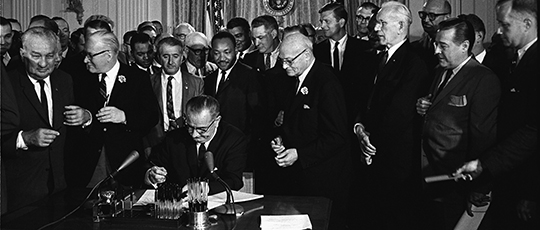- Judge’s ruling currently impacts few. The court-imposed injunction applies only to the State of Texas as an employer until the court hears an underlying legal challenge.
- July 1 deadline is still in play for most. Nearly all U.S. employers must still comply with the July 1 salary threshold set forth in the Department of Labor’s April 23 final rule.
- Additional impact may be forthcoming. Legal experts anticipate lawsuits and shakeouts in the wake of the Texas court decision.
(Editor’s note: Workspan Daily is actively covering breaking news surrounding the overtime final rule. Please check back to this article for updates. ... Last update: 2:50 p.m. Central on July 1.)
Interpretation of employment laws, legislation and regulation is rarely straightforward and 100% clear. The old maxim that answers to tough questions often begin with the words “it depends” certainly applies in the wake of Friday’s decision from the U.S. District Court in Eastern Texas in the case of Texas v. U.S. Department of Labor.
With the clock ticking on the Department of Labor’s initial compliance deadline for its overtime final rule, the federal judge overseeing the Texas case temporarily blocked its activation to certain organizations and created a legal precedent that may spawn additional questions, lawsuits and injunctions.
So, what does the Friday, June 28, court decision mean for your organization? It depends.
The Decision Details from Texas v. Department of Labor
In his judgment, U.S. District Judge Sean Jordan stated the Department of Labor (DOL) rule — which has an initial compliance date of Monday, July 1 — improperly bases eligibility for overtime pay on workers’ wages rather than their job duties. As such, he pointed his decision to the tangentially related U.S. Supreme Court case of Loper Bright Enterprises v. Raimondo, which was decided earlier on June 28. In Jordan’s interpretation, the court must follow “Loper Bright’s controlling guidance and the APA [Administrative Procedure Act]” — meaning, in Jordan’s view, an injunction in Texas v. U.S. Department of Labor is warranted and recommended.
At its core, Jordan’s decision sided with the State of Texas’ lawsuit that the DOL’s 2024 changes to the executive, administrative and professional (EAP) exemption within the Fair Labor Standards Act (FLSA) were “arbitrary, capricious, an abuse of discretion or otherwise not in accordance with law” as related to the Administrative Procedure Act.
However, and perhaps more important at this moment, Jordan ruled that although the State of Texas sought a nationwide injunction in its lawsuit, the scope of his decision would be limited to the plaintiff alone. “Here, the only party before the court is the State of Texas, in its capacity as an employer, suing to prevent the 2024 rule from going into effect,” Jordan wrote. “Texas has put on evidence of its own injuries as an employer but has not otherwise offered any evidence of injuries to other entities or individuals.”
The court-imposed injunction currently applies only to the State of Texas as an employer until the court hears an underlying legal challenge.
Therefore, the court-imposed injunction currently applies only to the State of Texas as an employer until the court hears an underlying legal challenge. Private employers in Texas, and general employers outside of Texas (including employers outside of Texas who have non-public payrolled workers in that state) must comply, at this time, with the provisions of the overtime rule that were announced on April 23 and went into effect on July 1.
OK, So What Does This Mean to You?
Employers not impacted by the June 28 court ruling must ensure all employees who are classified as exempt from overtime are now making at least $43,888 in base salary. If you have followed Workspan Daily’s coverage, you are aware July 1 is the first red-letter date in a multi-step federal plan to expand OT protections for many American workers by increasing the salary thresholds required in the FLSA.
The next deadline under the rule is Jan. 1, 2025, on which date organizations must ensure those exempt employees meet or exceed a higher threshold — $58,656 in base salary.
“Organizations should evaluate if their employee salaries are below the minimum threshold for either the July 1 or January 1 date, and if [those salaries are], they should either convert those employees to hourly or raise the salary to the minimum threshold,” advised James Reid, a partner and employment and business attorney at law firm Honigman LLP.
Those that have not taken action and/or fail to take action “have a risk tolerance for potential litigation/liability,” Reid stated.
Speaking of risks as well as Jan. 1, what are the odds the subsequent threshold holds pat? Well, it depends.
“While there is a reasonable possibility the January 1, 2025, increase will be enjoined as to all employers, employers need to prepare as if it won’t,” said Jonathan Segal, a partner at law firm Duane Morris LLP.
Segal noted key similarities between the current overtime rule and one in 2016, which was enjoined only nine days before its effective date. The 2016 rule was enjoined because the judge concluded the minimum salary was set so high that it effectively eclipsed the duties test. “The same could be said about the 2025 increase,” said Segal.
Segal added that “the 2016 rule was based on the 40th percentile of weekly earnings of full-time salaried workers in the lowest wage census area. The 2025 increase is based on the 35th percentile of the same census area. The 5% difference may not be enough to make a legal difference.”
What Happens Now?
Will greater ramifications come from the Texas ruling? Legal experts say to expect at least some impact.
A host of law firms have posted briefs to their sites over the past few days, stating they expect additional lawsuits to be filed throughout the country seeking a broader injunction and a possible appeal to the 5th U.S. Circuit Court of Appeals in the Texas case.
On a localized level, Reid said, “There will be more litigation arguing the scope of the limited injunction to Texas employees that also work outside of the state of Texas.”
On a broader level, Reid said the Texas decision marks a beginning more than it does an ending.
“It means more states will have to file a lawsuit if they wish to challenge it,” he said, before adding, “More states will [do that].”
Editor’s Note: Additional Content
For more information and resources related to this article, see the pages below, which offer quick access to all WorldatWork content on these topics:








